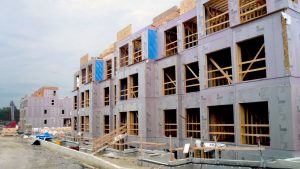The fact Canada’s unemployment rate hit a 25-month high in March should not surprise many people, given the exceptionally large inflow of international migrants into the labour force over the past year. According to Statistics Canada, the nation’s population increased by 1,271,872 (+3.2%) in 2023. This was the largest annual increase since 1957, with 97.6% of the gain due to both permanent and temporary international migration.
A decline in job vacancy rates leads firms to put hiring plans on hold
Given that over the past 12 months (through March of this year), the unemployment rate rose in 29 census metro areas, was unchanged in two, and declined in only five, hiring plans have cooled across most of the country. Due to a sharp year-over-year drop in total employment, the unemployment rate in St. Catharines-Niagara has trended steadily higher over the past year reaching a country-leading 7.6 percentage-point increase in March. Other CMAs which have exhibited significant percentage-change increases in their unemployment rates over the past 12 months have included Barrie, Ontario (+ 2.8), Kelowna, British Columbia (+2.0), Trois Rivieres, Quebec (+1.9), Kingston, Ontario (+1.9) and Lethbridge, Alberta (+1.7).
Since the Toronto census metro area admitted a third of the 398,700 permanent residents that settled in Canada’s 36 census metro areas over the past 12 months, it is not surprising that this surge has contributed directly to the sharp escalation in the CMA’s labour-force count. Reflecting this large inflow of permanent residents, Toronto CMA’s unemployment rate has risen a full percentage point from 6.5% to 7.5%.
Looking ahead, the near-term hiring outlook is severely overshadowed by cooling labour demand reflected by two recent measures of the country’s jobs vacancy rate. First, according to Statistics Canada, the job vacancy rate has trended steadily lower since May of 2022 and over the past 12 months, has fallen by -30%.
Second, the Canadian Federation of Independent Business (CFIB) which has recently revived its Private Sector Job Vacancy Rate publication, reported that private sector job vacancies had declined by a further -0.2% in the first quarter of this year and by -1.2% since the first quarter of 2023. Moreover, according to the CFIB, all sectors and all sizes of firms saw job vacancy rates decline or remain flat in the quarter. This suggests that in the near-term firms will limit their plans to take on additional staff.
Budget’s focus on housing will support construction jobs short term
The decline in the construction job vacancy rate suggests that hiring in the industry will cool slightly in the very near term. That said, measures in the budget aimed at boosting housing demand, plus the above-noted pre-existing inflow of permanent residents, should give a boost to residential construction and contribute to a surge in demand for construction workers in the second half of the year.
Measures in the budget which will boost housing demand include spending of $4.5 billion over five years to “support housing needs of low-income Canadians and refugees” and $4 billion over five years to increase the housing supply, including $1.5 billion for a new Housing Infrastructure Fund and $1 billion to expedite the construction of new purpose-built apartments.
But higher capital gains inclusion rate will depress investment and hiring longer term
The measure likely to have the most profound negative impact on the economy, is the 33% increase in the capital gains inclusion rate (i.e., from half to two-thirds). Given the Liberal government’s low approval rating, the post-budget shrinkage of return on investment and the prospect the inclusion rate will be reduced after the next election in 2025, foreign and domestic investors will likely put investment plans on hold to avoid the higher capital inclusion rate.
This will prevent capital from being deployed and cause an increased share of non-residential investment projects to be put on hold. Given the close relationship between investment and employment, (see chart), a slowdown in non-residential investment in 2025 will exacerbate the effects of the back-to-back declines in gross fixed capital formation which occurred in 2022 and 2023 and, by doing so, will increase the risk that hiring will slow in 2025 and possibly beyond.












Recent Comments
comments for this post are closed